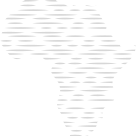Here you will find an interactive map of sub-Saharan Africa’s remaining biodiversity intactness. The Biodiversity Intactness Index (BII) indicates the average remaining proportion of ‘intact’ populations of indigenous species, given the dominant human land uses and activities. A score between 0% and 100% is assigned to each ‘pixel’ across the region based on biodiversity experts’ advice on how various populations of species are affected by the land use and other human activities within that area. The map was produced by integrating ten spatial datasets to map the region’s land uses of varying intensity, which was then combined with bioregional lists of indigenous taxa and the bii4africa dataset of expert estimates.
Since it is designed to integrate data from a wide range of land uses, species and environments, the BII offers a holistic perspective on the state of biodiversity in a particular region. The BII can be calculated at different scales (for example, at a national, province or municipal level) and for different species groups (for example, for mammals, reptiles or plants).
In our comprehensive assessment, we found that sub-Saharan Africa has lost 24% of its pre-industrial populations of plants and animals. Losses range from just 10% for some disturbance-adapted grasses and wildflowers to more than 75% for large mammals such as elephants, lions, and some antelopes. Rwanda and Nigeria have experienced the largest declines, while the most intact populations are in Namibia and Botswana. The main drivers of biodiversity loss are overharvesting/grazing and agriculture. A striking finding is that 84% of the region’s remaining wild populations persist outside of protected areas – in natural forests and rangelands where people coexist with and depend on biodiversity. A priority for conserving and restoring biodiversity is the sustainable management of these ‘working lands’ that cover 80% of the region and support more than 500 million people.
Clements et al. 2025. A place-based assessment of Sub-Saharan Africa’s biodiversity intactness. Nature. https://www.nature.com/articles/s41586-025-09781-7
Clements et al. 2025. Data and R code for: A place-based assessment of Sub-Saharan Africa’s biodiversity intactness. figshare. Dataset. https://doi.org/10.6084/m9.figshare.29773169.v1
GEE app: https://geethensingh.users.earthengine.app/view/bii
GEE community catalogue: https://gee-community-catalog.org/projects/bii_africa/
